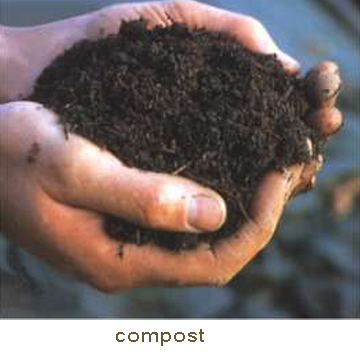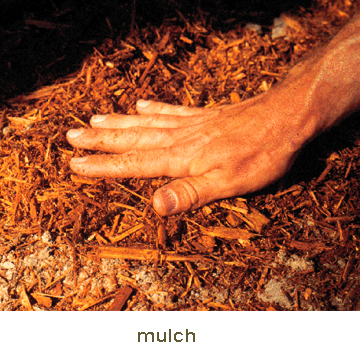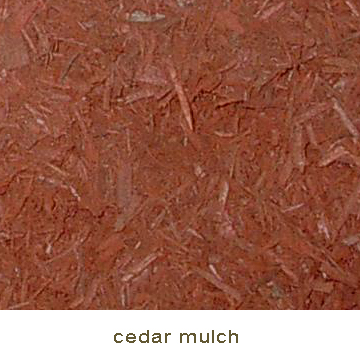

Components |
||
Common Soil Amendments Compost - The most common and functional approach to amending soils is to till in a layer of high quality compost. Not only does this improve the fertility of the soil, but also helps to improve soil porosity and structure, which increases the retention capacity. As the impermeability of urban environments continues to escalate, the ability of soils to retain runoff is becoming increasingly important. Other organic amendments Wood Products – can serve as an effective soil amendment. If you plan to apply wood chips or sawdust, you may need to apply nitrogen fertilizer at the same time to avoid nitrogen deficiency. Sphagnum Peat - Sphagnum peat is an excellent soil amendment, especially for sandy soils, which will retain more water after sphagnum peat application. It is harvested from bogs in Canada and the northern United States and if revegetated, can grow back relatively quickly. Biosolids - Biosolids are byproducts of sewage treatment. They may be found alone or composted with leaves or other organic materials. Seaweed or kelp – either can be added to compost piles, used as mulch or simply worked into the soil as an amendment. Seaweed and kelp contain over 70 vitamins, minerals and enzymes essential to plant health. Bone Meal – is made from finely crushed animal bones. This product encourages healthy root development if worked into the bottom of holes before planting trees and bushes. Bone meal is a good source of phosphorous and calcium.
Blood Meal – consists of dried pulverized animal blood. Blood meal releases nitrogen into the soil, but not enough to harm the plants when mixed into the soil. Fish meal – contains nitrogen, phosphorous, and potassium and is referred to as a balanced fertilizer. An application of fish meal will slowly release nutrients throughout the entire summer. Animal Manure – is good for nitrogen deficient soil. Once well rotted, it can be mixed directly into the soil as a good additive. However, it is important to use caution because fresh manure can harm plants due to elevated ammonia levels. To avoid this problem, use only aged manure (at least six months old). Pathogens are another potential problem with fresh manure. Wood Ash – nutrient content in wood ash depends on the type of wood being burned. Ash should be spread in moderation directly on beds or added in moderation to a compost pile. Wood ash is typically high in potassium. Crushed eggshells – are a good source of calcium. They can be added to compost piles or worked into the soil. Works especially well with vegetables that require higher calcium levels.
Inorganic Amendments Gypsum – is a good source of calcium and sulfur. This material can improve structure in clay soils and alkaline soils which can be very high in salt. Gypsum can be added to compost piles, mixed into the soil, or watered onto the soil. Epsom salts – also called magnesium sulfate, is a good source of magnesium. It is not, however, permitted by some organic certifying agencies. Greensand – this material is typically added to compost for its slow release of potassium and other trace elements. Rock dust – is a good source of potassium, calcium, magnesium and iron. This product is also called Azomite and is thought to be a safe soil amendment. Though it has trace elements of aluminum which has been linked to Alzheimer's disease, no proven links between rock dust and Alzheimer's exist. Sand - Sand is the most commonly used inorganic amendment due to its low cost and effectiveness. Calcined clay, also known as cat litter, is another effective coarse amendment.
Common Mulches: There are two main and broad categories of mulches organic and inorganic. However as the following list explains, inorganic mulches do not affect little effect on the soil ecosystem and water quality. It is recommended that organic mulches be used where ever possible and appropriate.
Organic Mulches: Any biodegradable matter can be used as an organic mulch. Compost Mulch: The use of compost as a landscape mulch has multiple benefits. Aside from the aesthetic value of using a dark compos as a landscape mulch, compost also has the added benefit of providing erosion control both during and after construction. Compost can also be effectively tilled into planting beds as an amendment when further mulching is required.
Bark: This is the most common and versatile landscape mulch. It can be found in a variety of shapes, sizes, colors and textures. It is composed of lignin, which decomposes very slowly and is often insect resistant. Furthermore, because it decomposes slowly, bark mulch is less hospitable to artillery fungus. This type of mulch is typically composed of bark from Thuja, Cypress , Hemlock, Oak, Pine or Western Red cedar.
Straw Mulch: Used primarily as erosion control, it is applied to the topsoil. It can also be used to add nutrients to the soil. In both uses it is applied similarly in that it is mechanically “blown” into place, or manually spread to a thickness that covers the soil with little or no soil visible. Cellulose fiber mulch: Used primarily as erosion control. It is sprayed onto the surface of the soil. The mulch is mixed with water which holds the mulch and tactifyer together. The cellulose fiber mulch usually contains seed as well of some sort of “cover crop”, typically a sterile annual grass; the roots of the plants hold the soil and help stabilize it. Shredded Wood Waste: This type of mulch is composed of untreated, unpainted woody debris from construction and land-clearing operations, which are processed into coarse chips and sold as ‘Hog Fuel”. In Western Washington , this type of mulch is predominantly used for mud control and on large scale projects. Its two inch particles allow water to easily filtrate into the soil. Wood Chips: Wood chips can be commercially prepared or manufactured on site with a wood chipper. They are economical and commercially available in bags or bulk. However, the chips do not stay in place as well as barks and may blow or float way. As with other wood products, wood chips have a high carbon, to nitrogen ratio, so they may temporarily steal nitrogen from the soil during decomposition, thus requiring amending the soil with nitrogen prior to covering. Another important concern is over mulching. Owing to the fact that wood chips lose their color and decorative appearance much more quickly than bark, people often apply a new layer every year. However, this can lead to over mulching, which can choke out shallow-rooted plants. Furthermore, it can be become so compacted, preventing water penetration.
Inorganic Mulches: Inorganic mulches, which include geotextiles, plastic mulch and stone do not significantly change soil properties in. However, some do help to conserve water, warm the soil and prevent serious weed prevention. Burlap: There are two types of burlap. Made from natural fibers such as jute, sisal or hemp, burlap decomposes. However, synthetic burlap does not break down and needs to removed after use. Burlap is mostly used for preventing erosion on steep slopes and is widely used in grass-seeding operations. Fiber glass: Fiberglass consists of woven glass fibers, and is therefore completely fireproof, costly and nonbiodegradable. The advantage of using this type of mulch comes from its ablility to absorb water and stays compact. Plastic: Plastic mulch from polyethylene is predominantly used to encourage growth and to prevent water evaporation from the soil. It is effective for warm weather crops and transplants, and is therefore often used in agricultural industries. However, this type of mulch does not allow the soil to breathe, which can lead to serious disease problems, in addition to stunted growth from the lack of oxygen. This type of mulch prevents moisture evaporation and water penetration, resulting in the need for irrigation. Plastic mulch is not recommended for improving soil health or water quality. Stone: Stone includes gravel, shale, crushed marble or limestone, volcanic rocks and flagstone. The use of stone as a mulch can be attractive, it retains heat from the sun, so it will warm the soil under it, and it's water permeable. This kind of mulch is also permanent and low maintainance. One factor to consider is the possiblility of trace elements that might leach out of a stone mulch over a period of years, which could affect water quality. However, this will probably not be a problem unless limestone chips are used. While inorganic mulches are beneficial in certain instances, they do little to enhance water quality and do not significantly improve the quality of the soil ecosystem or promote plant health. Therefore their usage and application should be carefully considered. |
||
|
||




